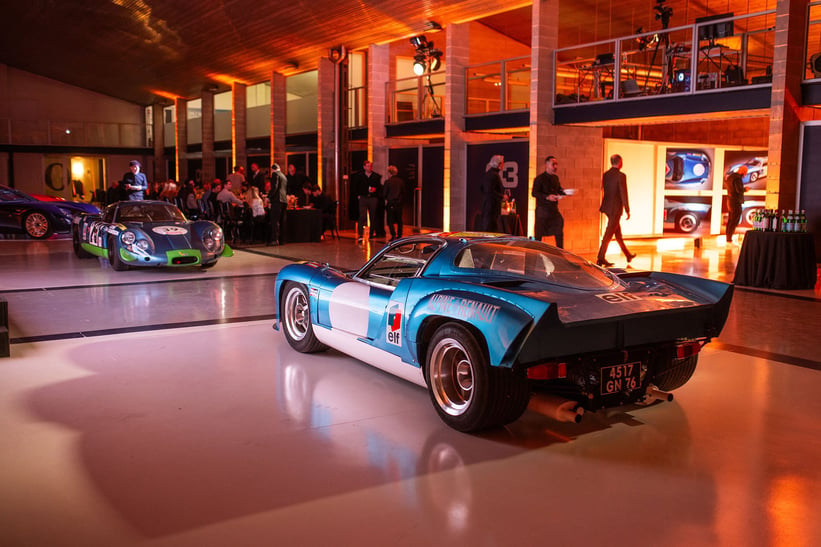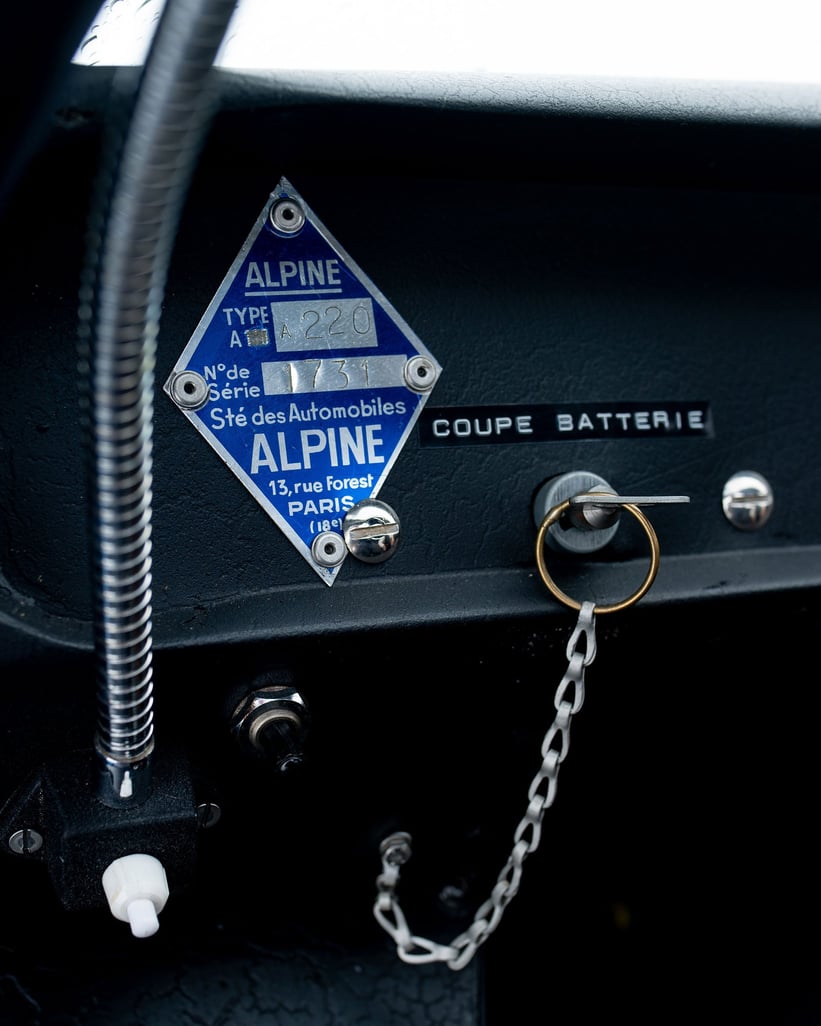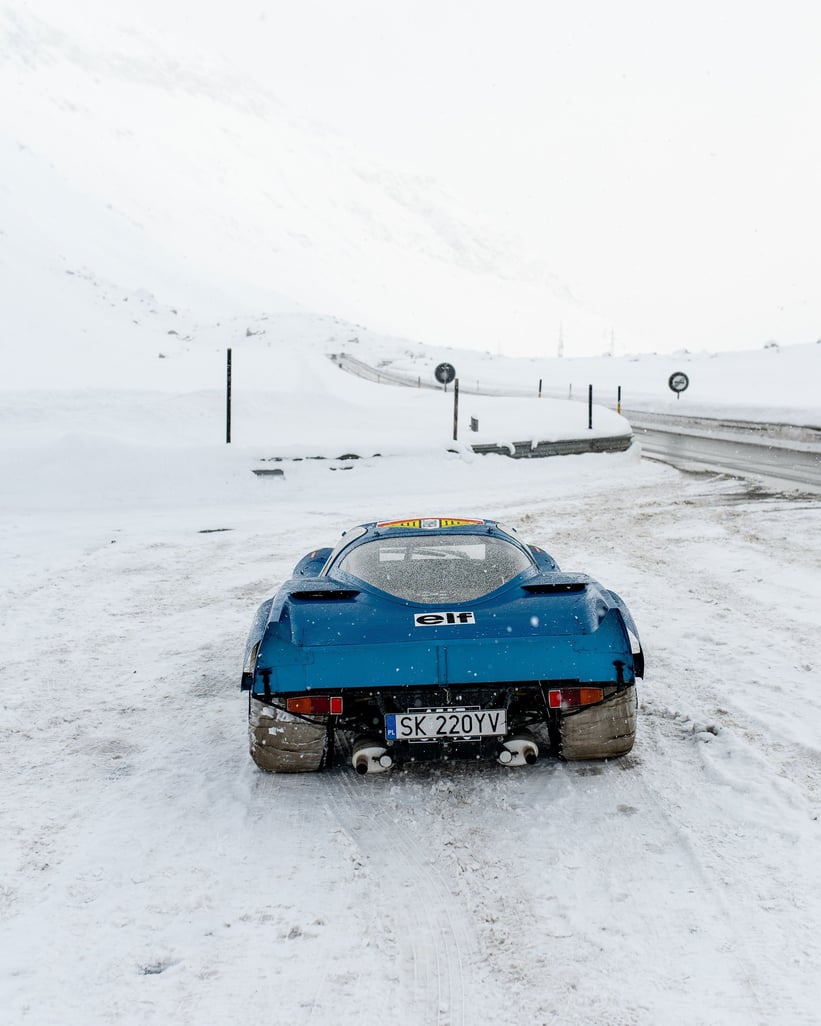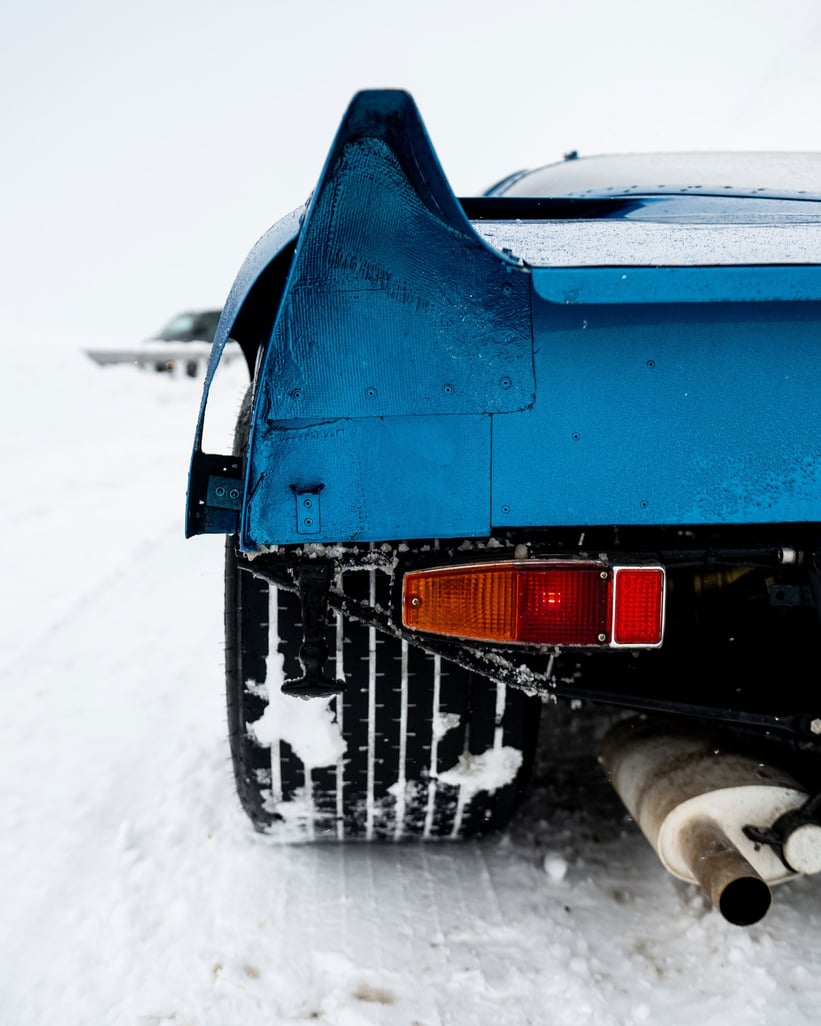


They came to St. Moritz straight from the Zagato headquarters in Milan, where next to a scale model of the upcoming AGTZ Twin Tail tribute car, they were presented to potential customers and friends of the project. Now they’re parked before me, in-between other racing and rally cars of the “Racing Legends” concours class of The International Concours of Elegance, The ICE at St. Moritz. These are the two Alpine Le Mans cars that inspired the design of the limited-run (only 19 examples will ever be built) shapeshifter that is the AGTZ Twin Tail.


The first one is long and sleek, with aerodynamics designed to reduce drag to a bare minimum, as was originally intended by Jean Rédélé and Amadeo Gordini. And, after a string of victories in the “efficiency index” category in Le Mans with the A210 - another interesting long tail Alpine with a 1.3-litre 130 hp engine - the pair also designed its successor. With a centrally mounted 3-litre V8, the A220 was engineered not only to be “the fastest litre of petrol in the world” in terms of frugality, but rather to compete with the likes of Ford and Ferrari for top Le Mans accolades in the 1969 race.

The short tail is, in fact, a byproduct of Rédélé’s and Gordini’s endurance racing failure. All three cars car that were entered into the 24 Hours of Le Mans in 1969 turned out to be so unreliable that the team recorded an all-round DNF. Quick solutions were discussed on how to turn bad luck around to show customers that in motorsport Alpine was still a name to be reckoned with. And as the cars clearly weren’t built for long tracks with high top speeds, where they had to run at peak power for long periods of time, which is when the in-house designed new V8 engine usually exploded, an alternative had to be found.


Fortunately, both Gordini and Rédélé refused to consider their creation a complete failure. If the car couldn’t compete at a track like La Sarthe, one third of which was essentially a long straight, maybe it would do better in competitions where agility was required. Three weeks later they had their answer. The A220 Short Tail won against multiple Porsches at the Chamrousse hillclimb coming in third place, and performed extremely well at tighter, twistier tracks like the Circuit de Nogaro where it came in second. With higher ground clearance, improved cooling and more dazzling lights, it also competed in the Rally de Cévennes. This adventure, even if also not entirely successful due to poor reliability of the V8, pointed the Alpine team into a new direction. Rally stages were where they really made their name as a motorsport icon with the A110.

History lesson over, it’s time to drive the cars. I really can’t wait to see what they both feel like, but Jakub informs me we can only take the short tail out, as it is the only one of the two that is registered and can legally drive on public roads. The Swiss police are known to be stern, so we don’t want to risk it. Direction? The only Alpine pass left open under these apocalyptic circumstances - Julier. Let’s see how far we can go before the snowstorm stops us. The car was prepared for laps around the ice track, so with studded tires it should be quite far, unless my driver runs out of talent…


The short sports exhaust makes a hell of a racket both on startup and during acceleration. The car is small, the cabin tight. If the passenger seat wasn’t offset from the driver, we would be touching shoulders. I immediately feel how well it reacts to steering and throttle inputs. It is a racing car converted for hillclimbs after all, so it turns into the first two hairpins with the ease of a mountain goat. On fresh snow Jakub has to maintain a high level of concentration. The car is short and most of its weight is located in its middle, so it feels like it could easily spin if we’re not careful. When we pass other cars, however, we always get a thumbs up. Quite a silver lining, driving this here in the snow, while the ice track is closed.



Will the AGTZ Twin tail be as popular? Judging by the internet’s reaction there’s a good chance of that - something that both Zagato and La Squadra are counting on. Who knows, maybe we can also convince them to build one in racing spec then take it to Le Mans. Everyone loves a come-back story, and reclaiming the honor ‘lost’ by the original Alpine team would rival the comeback Rocky Balboa made in the 14th round of the first movie.
Photos by Andresito6000


































